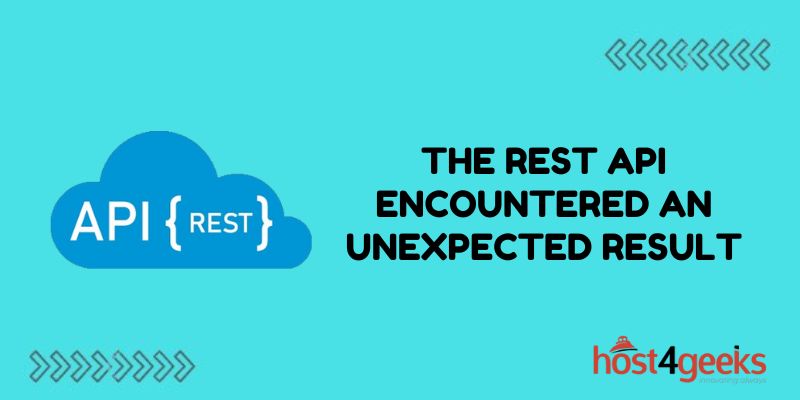Dealing with unexpected errors can be one of the most frustrating parts of working with REST APIs. You send what seems like a perfectly formatted request and instead of the data you need, you get back an obscure error code, no data, or worse yet – a blank screen.
Before you pull your hair out in chunky clumps, take a deep breath. REST API errors may be unexpected, but they are rarely unsolvable. With some strategic troubleshooting and a clear head, you can usually coax even the most stubborn API into cooperation.
In this guide, we’ll walk through the top methods for dealing with those confounding unexpected REST API results. We’ll look at how to analyze errors, isolate problems, compare differences, and reconstruct broken communication piece-by-tired-piece until you’ve wrestled your API into behaving properly. While APIs may speak a language of their own, we’ll show you how to become fluent in Interpreting their oft-frustrating dialect.
Check the API Documentation
The first step is always to check the API documentation. Carefully review the expected requests and responses for the endpoint you were calling. Compare what you sent and received to the examples. Often, an unexpected result simply means you did not format a request properly or handle a response as intended.
Understanding exactly what the API expects and returns will provide clues for resolving unexpected behaviors. If the docs do not help, proceed to the next tactics.
Inspect the Actual API Call
Use network tracing tools to capture the raw API request and response. For client-side calls, use the Network tab in Developer Tools. For server-side calls, output logs.
Compare the request headers, body, response code, and content to the docs. Verify that your call matches what the API expects. If differences exist, update your code to conform to the API specs.
Check Error Fields in the Response
Unexpected results typically provide error details that explain the issue. Inspect all error and status fields in the response for messages.
Often, the API will indicate a specific problem such as invalid credentials, missing parameters, bad request formatting, or unknown resource IDs. Use these error details to pinpoint and fix the problem. If the errors seem ambiguous, proceed to the next steps.
Try the Call from a Fresh Client
Often, unexpected issues come from the client code itself. To eliminate this, try making a raw call directly through an API testing tool like Postman.
Strip away any existing headers, formatting, and parameters. Then, slowly add these back while watching for problems. This can help identify client-side bugs.
Check Server Logs
For backend API services you control, check log files for stack traces and errors. Often, the server will log details that the API response does not include.
Use log data to trace a request to the code producing the problem. For example, logs may reveal an unhandled error leading to a 500 status. Fixing the underlying error can resolve the unexpected result.
Return Expected Test Data
To further isolate backend issues, have API methods return hardcoded test data instead of calling normal code. If this avoids unexpected responses, trace through the intervening code for bugs.
Compare Expected vs Actual Outputs
Capture both expected sample responses and actual responses. Diff the two payloads to analyze specific variations. For example, you may find that an ID field changes unexpectedly between calls. This comparison can reveal subtle data issues.
Reproduce Locally or in Isolation
Call the API from a simple test script running locally, or from an isolated system like a Docker container with only essential dependencies.
If the unexpected result disappears in isolation, it points to an environmental issue in the original context such as differences in configuration, permissions, or third-party services.
Reset and Rebuild the Interface
In some cases, the best option is to completely rebuild the API interaction:
- Delete the existing integration
- Thoroughly reset related state on both client and server-side
- Re-initialize configurations, databases, and permissions
- Step through slowly calling the API and confirming the expected results
Though time-consuming, this can surface complex issues that accumulate over time.
Conclusion
Debugging unexpected API errors often requires patience. There are many complex failure points across networks, systems, code, and configurations. Moving methodically through validation, logging, comparison, isolation, and reconstruction tests can eventually uncover the issue. Persistence pays off to restore smooth API functionality.
